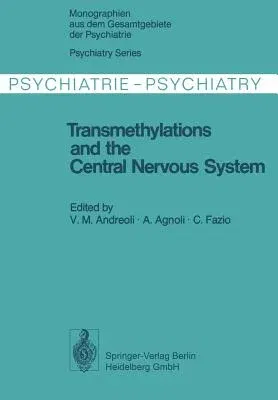Transmethylations and the Central Nervous System (Softcover Reprint of the Original 1st 1978)Paperback - Softcover Reprint of the Original 1st 1978, 23 August 2014

Qty
1
Turbo
Ships in 2 - 3 days
In Stock
Free Delivery
Cash on Delivery
15 Days
Free Returns
Secure Checkout
Part of Series
Monographien Aus Dem Gesamtgebiete der Psychiatrie
Print Length
188 pages
Language
English
Publisher
Springer
Date Published
23 Aug 2014
ISBN-10
3642885187
ISBN-13
9783642885181
Description
Product Details
Book Edition:
Softcover Reprint of the Original 1st 1978
Book Format:
Paperback
Country of Origin:
NL
Date Published:
23 August 2014
Dimensions:
24.41 x
16.99 x
1.07 cm
ISBN-10:
3642885187
ISBN-13:
9783642885181
Language:
English
Location:
Berlin, Heidelberg
Pages:
188
Publisher:
Weight:
322.05 gm

